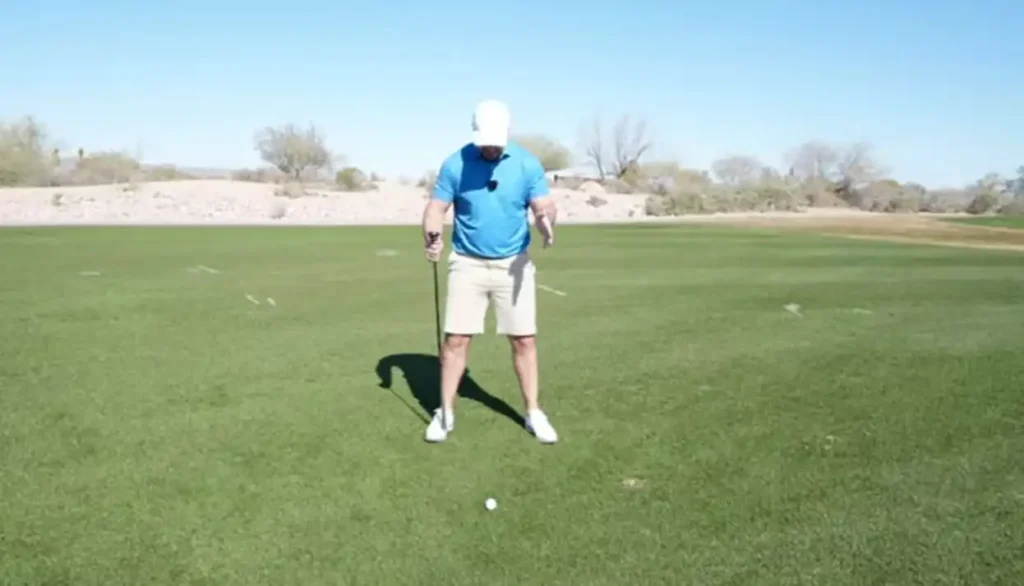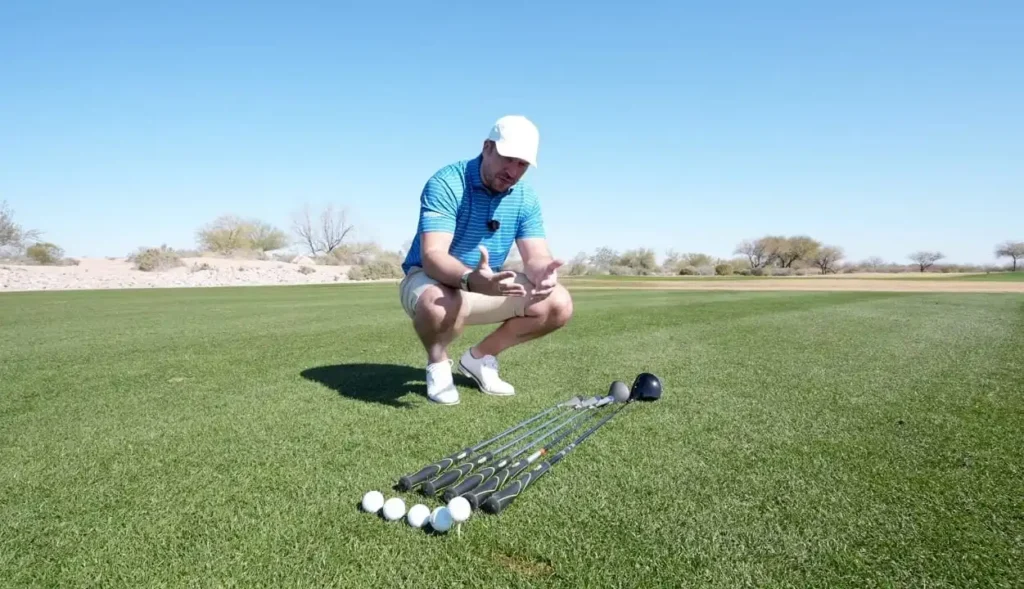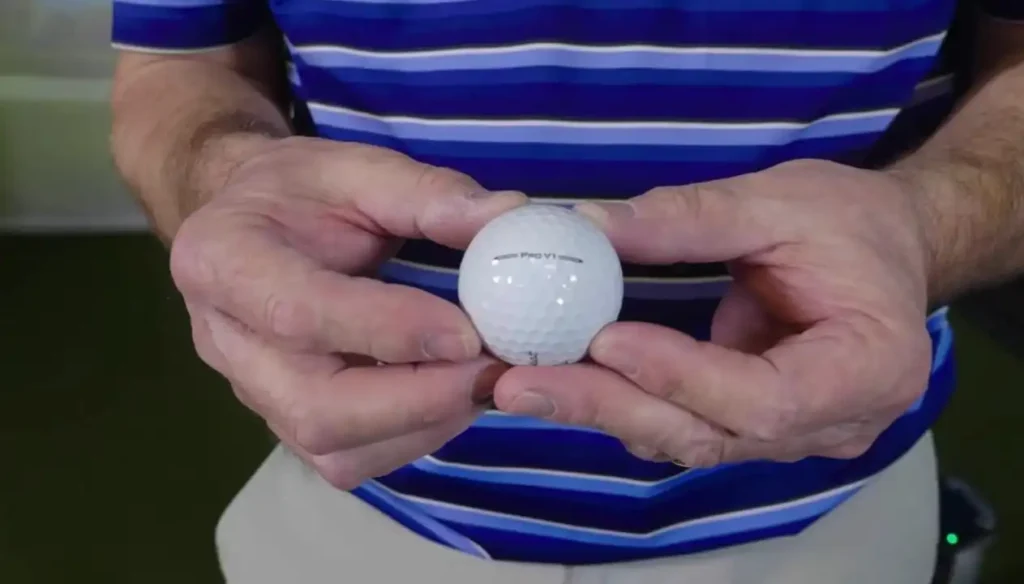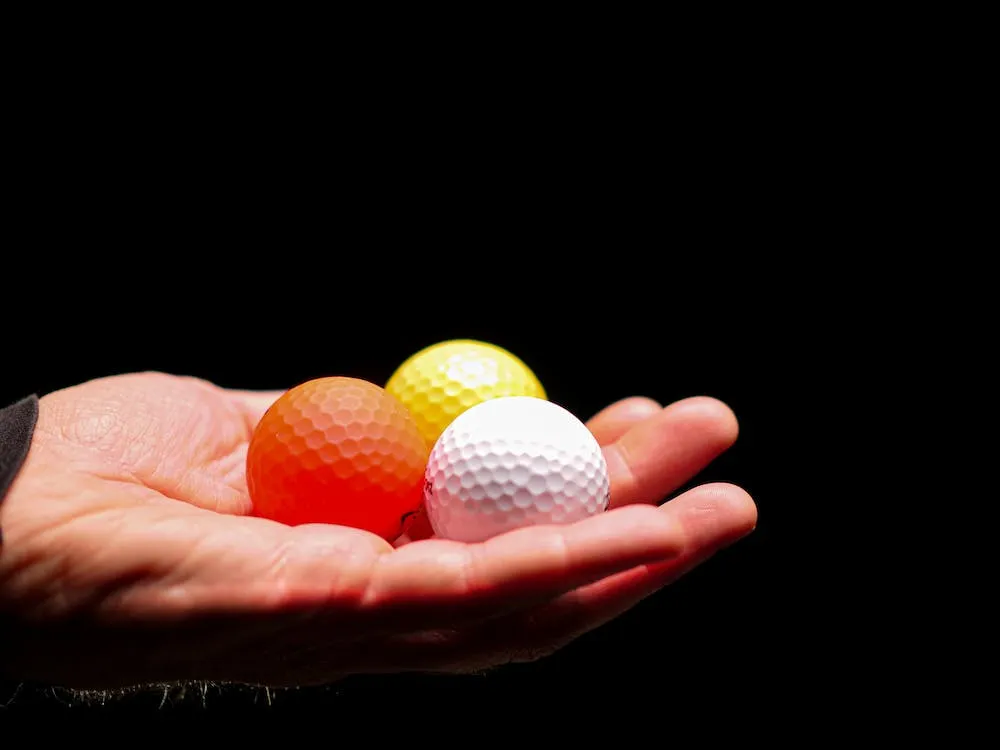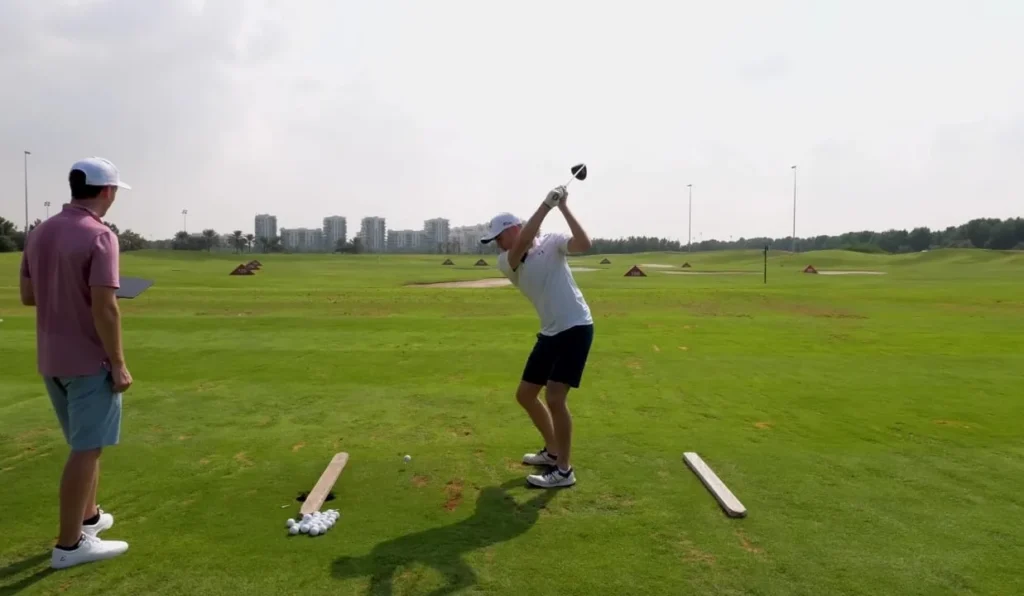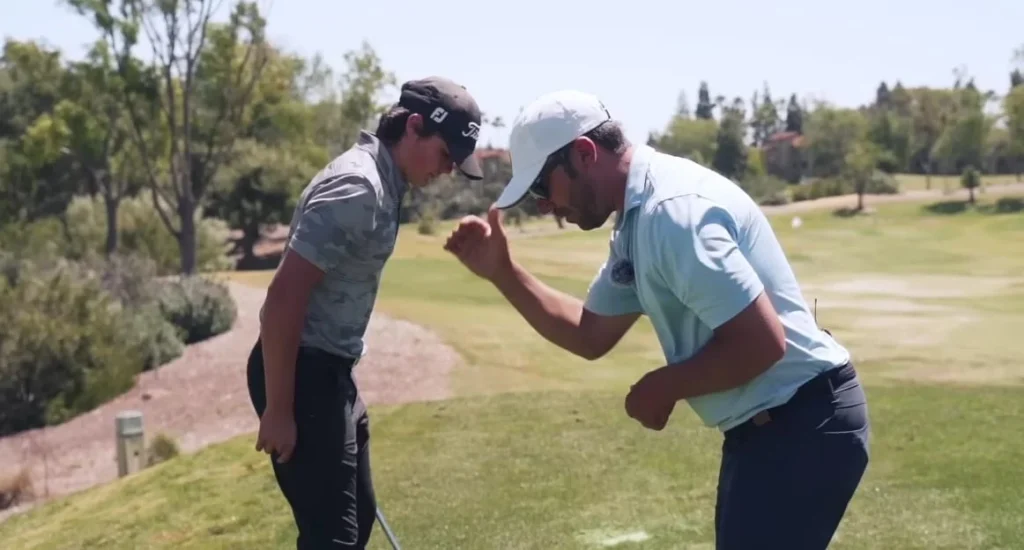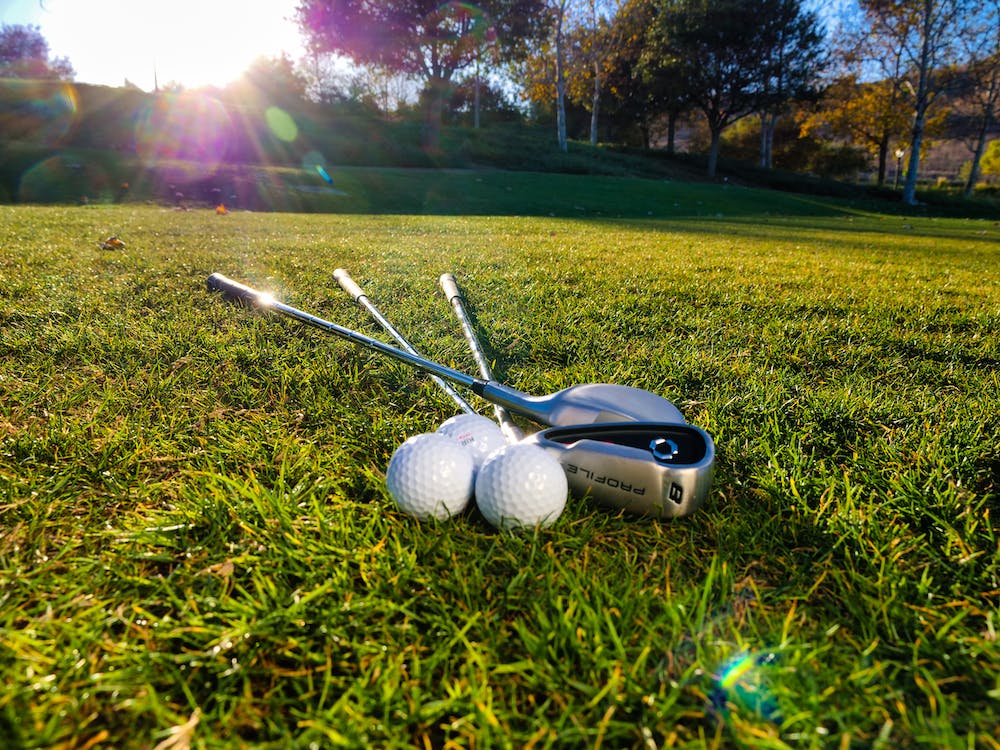Mastering the art and science of golf ball positioning is very important to make your game worth all that effort. The nuanced dance between the golfer and the ball hinges on that one strategic placement of the golf ball for each club. From drivers to irons, the science behind golf ball position unveils a secret language that, when deciphered, can unlock a golfer’s true potential. Join us as we delve into the precise details of golf ball positions for different clubs, demystifying the intricacies and providing insights into this mystery. Learn how to position your golf ball for optimal results.
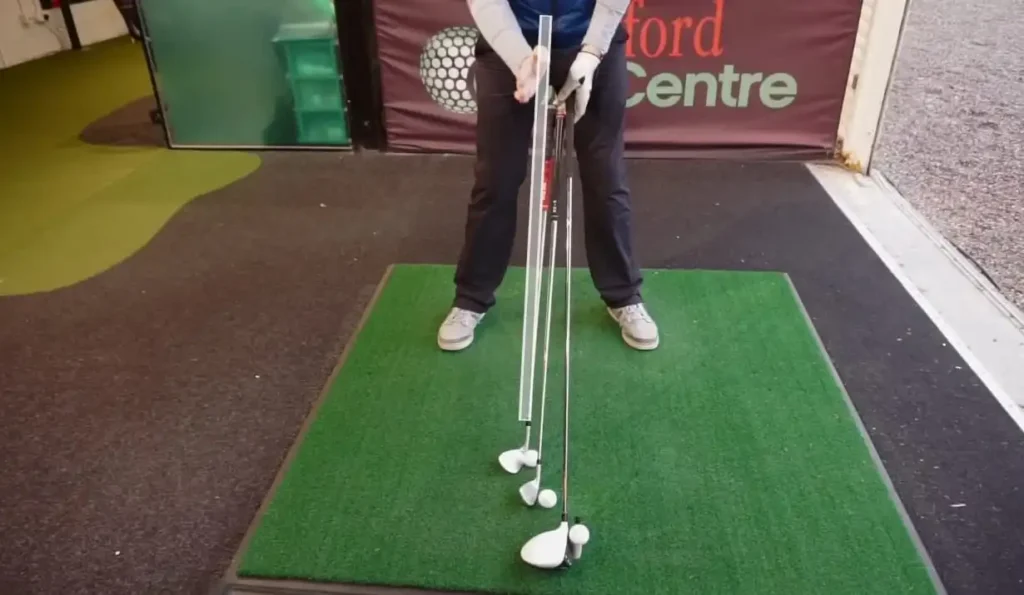
Understanding Golf Ball Position For Each Club
The position of your golf ball should depend on which driver you’re choosing. That’s why we will discuss the best golf ball position for each club, explaining the intricacies involved in choosing a perfect partner for crime the next time you’re on the green.
Driver Precision
When it comes to drivers, their sweet spot lies just inside your left heel. This position maximizes hitting up on the ball by placing its low point behind your heel. Now, this small tweak can have significant ramifications on the trajectory and distance of shots taken with this instrument.
Iron Mastery
Precision in iron play is of utmost importance. Here’s the best golf ball position for 7 iron: adjust your ball-strike position by half an inch towards your front foot for each longer club. So, a couple of inches off center should ensure an ideal trajectory without too high or low shots when playing with 7 iron.
Wedge Wisdom
Wedge golf requires an individualistic approach. So, you gotta place the ball in the middle of your stance for an aggressive downward strike that remains balanced while creating optimal spin for improved control around greens. This technique ensures an even swing and provides optimal spin control on each stroke for better green management.
The Best Golf Ball Position For Different Clubs
Let’s discuss the prime golf ball position for irons in this section. We’ll briefly discuss which golf ball positions go well with various clubs while also giving the reasoning behind why you should choose that certain position. Hopefully, this will help you get in shape before Christmas for a game with the boss.
Short Irons (Wedges, 9-iron, 8-iron)
Ball Position
The center portion of the stance is the best golf ball position in this scenario.
Reasoning
Upright lie angles demand hitting the ball first and then the ground, producing a deep divot.
Middle Irons (5-Iron through 7-Iron)
Ball Position
Slightly forward of center (1-2 ball widths) seems like an ideal golf ball position here.
Reasoning
Flatter lie angles than short irons and, therefore, shallower divots are produced.
Long Irons (2-Iron through 4-Iron) and Fairway Woods
Ball Position
The best position in this scenario would be 2 to 3 ball widths forward of center.
Reasoning
A sweeping action, striking the ball directly at the bottom of the swing arc with little or no divot.
Driver
Ball Position
Farthest forward, even with the left heel. That’s the best ball position to go for in this regard.
Reasoning
An upswing strike for optimal distance and trajectory. Try some golf ball position training aid to further improve yourself.
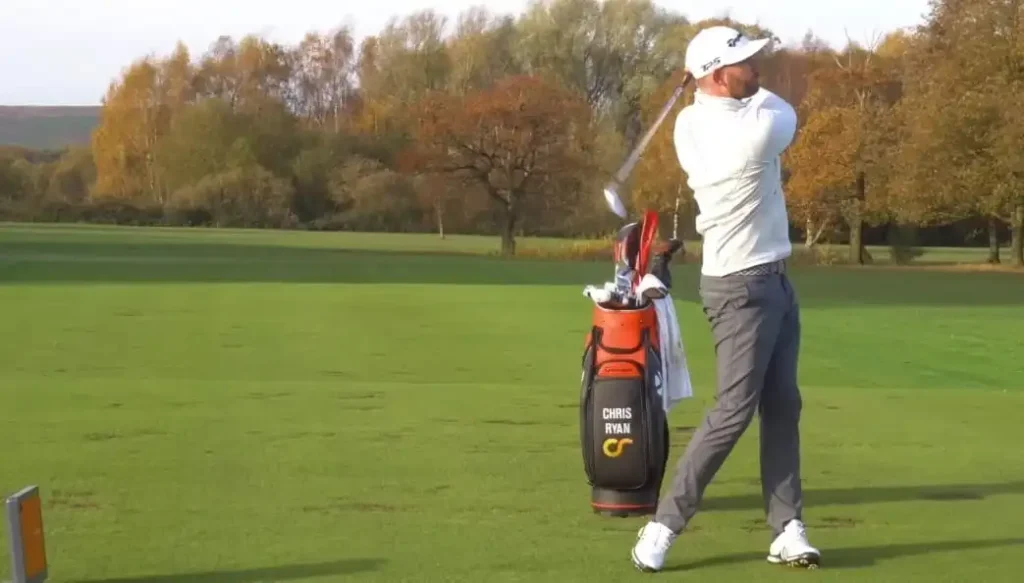
Realizing The Impact: Insights From Professionals
Determining the best golf ball position can be a little difficult. Professional golfers understand the subtle complexities of setup, realizing that even minor adjustments can have dramatic impacts. Four-time PGA Tour winner Marc Leishman emphasizes this point, noting how even slight modifications positively impacted his game and contributed to him finishing among the top 10 at WGC Match Play due to proper stance setup.
Fine-Tuning Ball Position for Optimal Results
Understanding your swing and ball position are integral parts of successful ball striking, so the golf ball position chart below serves as an aid in finding optimal ball locations:
Short Irons
The center portion of the stance is for a deep divot.
Middle Irons
Slightly forward of center for a shallower divot.
Long Irons/Fairway Woods
2 to 3 ball widths forward for a sweeping action.
Driver
Farthest forward, even with the left heel, for an upswing.
Consistency Over Guesswork: The Data Analysis
For this analysis, real-time data collected from golfers of differing skill levels and playing styles was utilized. Our focus included factors like swing consistency, shot accuracy, and performance across various ball positions. That’s how we can find the best golf ball position for different clubs based on the skill and efficiency of each player.
Though some argue for adapting ball position according to club length, many favor consistency as an approach for controlling distance and shot outcomes. Placing your ball at its original spot and altering only your stance width provides a reliable method of controlling both distance and outcomes of shots. Visualize an imaginary line from your left shoulder joint down towards the ground as your path for ball-first contact while maintaining an orderly swing path arc.
Swing Consistency
Golfers exhibiting consistent ball positions were shown to demonstrate greater swing consistency. Variance in swing mechanics decreased, leading to more predictable and controlled performances from these golfers. That’s how you can find the optimal golf ball position for each club.
Shot Accuracy
Contrary to popular belief, data revealed that consistent ball placement contributed significantly to improved shot accuracy. Golfers hitting from one spot experienced improved distance control and directionality control as a result. Positioning the ball the right way helps you hit them quite farther.
Performance Metrics
Metrics such as Greens In Regulation (GIR) and Fairways Hit showed marked improvements for golfers who implemented a consistent ball position strategy, suggesting there is an indirect relationship between consistent ball placement and improved gameplay performance.
Implementing the Unified Ball Position
Data-driven approaches often recommend making simple stance adjustments to reach a unified ball position. So, we have used the above-mentioned data and finally realized these simple tips to find the best golf ball position:
Modifying Stance Width
Forget changing the ball’s horizontal position, instead, focus on altering your stance width. A wider stance for longer clubs and a narrower for shorter clubs ensures that it consistently lines up with your left pectoral muscle and ensures consistent alignment of the ball with the left pectoral muscle. Now, that’s the kind of golf ball position you will find more comfortable.
Left Shoulder Imaginary Line
Imagine a make-believe line connecting your left shoulder joint and ground, symbolizing the low point of your swing arc. Place the ball directly under your left pectoral muscle for ball-first contact and a controlled swing arc. This “left shoulder imaginary line” trick can help you find that sweet spot for ball placement, helping you with golf ball position training aid effectively.
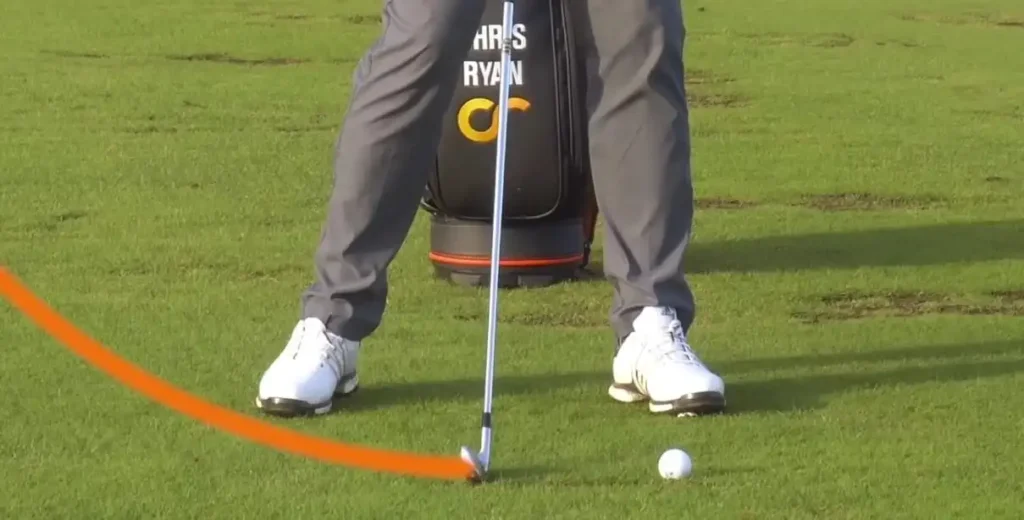
Conclusion
As we conclude this exploration into the delicate art and science of mastering golf ball position, it becomes evident that the key to unlocking your golfing prowess lies in understanding the nuances of each club. The strategic dance between golfer and ball requires a keen appreciation for the optimal golf ball position for irons, drivers, and every club in between. Whether you’re teeing off with a driver or fine-tuning your approach with a 7 iron, the subtle adjustments in golf ball position for each club can be the difference between a soaring success and a frustrating miss. After finishing this article, do read our piece on tips to play golf when it’s windy outside.
FAQs – Golf Ball Position
How will ball position impact my golf swing, and why is achieving optimal ball placement so essential to success?
Your position of the golf ball impacts its angle of attack at impact, an influence that directly translates to the desired trajectory, distance, and accuracy from each shot you hit. Getting it correct will enable you to maximize both.
Should the ball position change for different clubs and, if so then why?
Golfers traditionally learned how to adjust ball positions depending on which club was in hand, however, real-time data shows that having consistent ball positions may result in more reliable performances across a wider array of clubs.
Will maintaining a constant ball position increase shot accuracy, and if so how?
A consistent ball position increases shot accuracy; real-time data shows this effect among golfers who regularly hit from one spot. These golfers experience improved direction control and distance management as a result.
What role do real-time data analytics play in creating optimal ball positions for golfers?
Real-time data emphasizes the significance of consistency for successful performances from golfers using uniform ball position strategies – consistently placed balls ensure reduced swing variance leading to more reliable performances and under control performances.
Are there specific recommendations for ball placement with short and long irons?
Yes, short irons (wedges, 9-iron, and 8-iron) benefit from being played centered, while longer irons 2-4 and fairway woods perform optimally when played 2-3 ball widths forward of the center according to real-time data.
How can I tell if my stance is impacting the ball position, and what adjustments should be made?
Stance width and posture have the power to impact ball location; real-time data suggest keeping consistent with this ball’s trajectory while making any necessary stance adjustments that ensure optimal contact, control, and contact points for maximum performance.
Will real-time data benefit amateur golfers or is it more tailored towards professionals?
Real-time data provides invaluable insight for golfers of all skill levels; amateurs especially can take advantage of its consistency and precision to improve their game overall.
How can I customize my ball position based on my unique swing dynamics?
By collecting real-time data about yourself. You should compare yourself with players of similar skill levels who use data-driven approaches in their approach game. This real-time data offers a great deal of insights that traditional methods cannot.
Is there an established rule or does ball positioning vary for golfers individually?
While real-time data supports a consistent ball position, individual preferences, and unique swing characteristics may require minor tweaks for optimal play. Finding what works for your game is of utmost importance.
